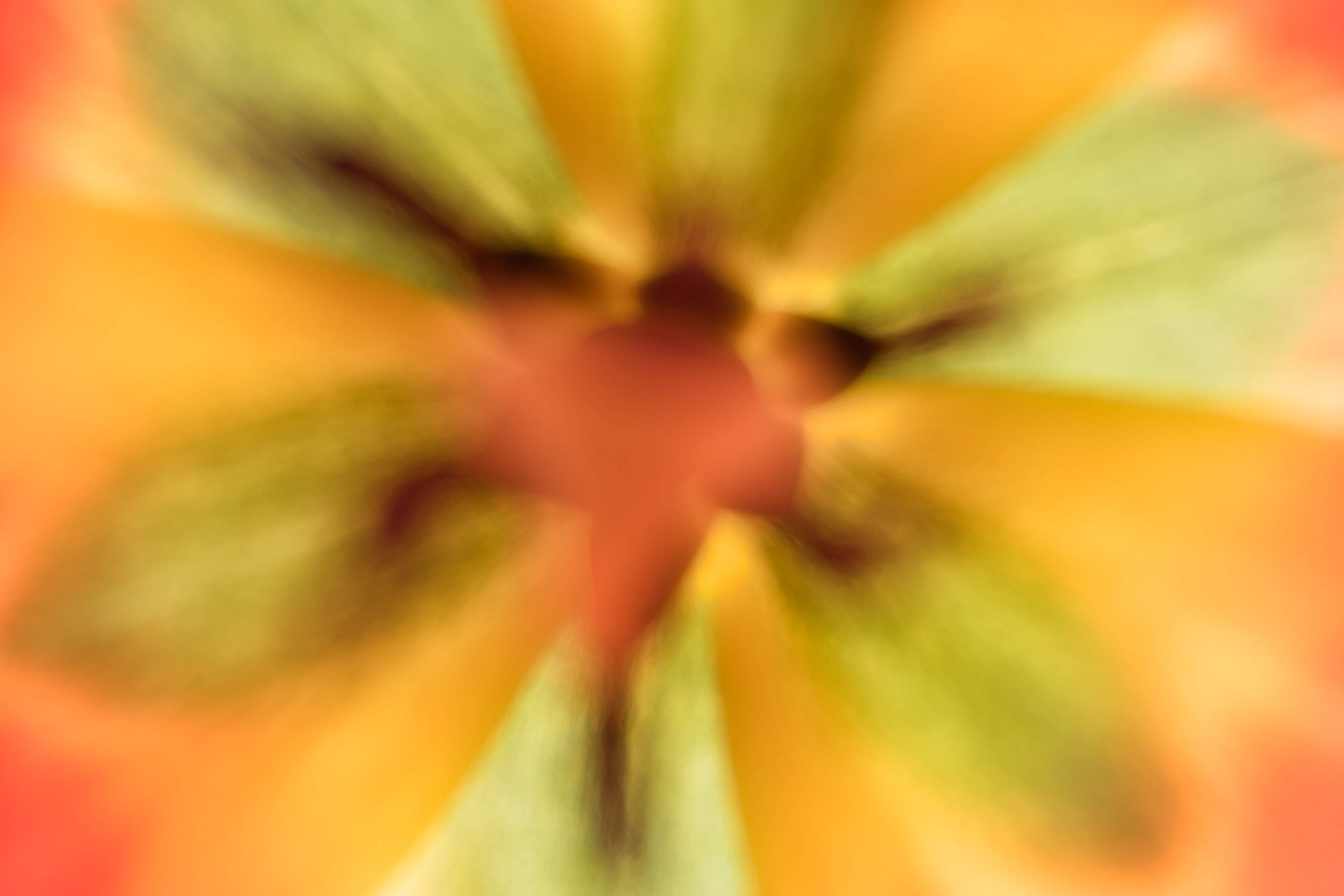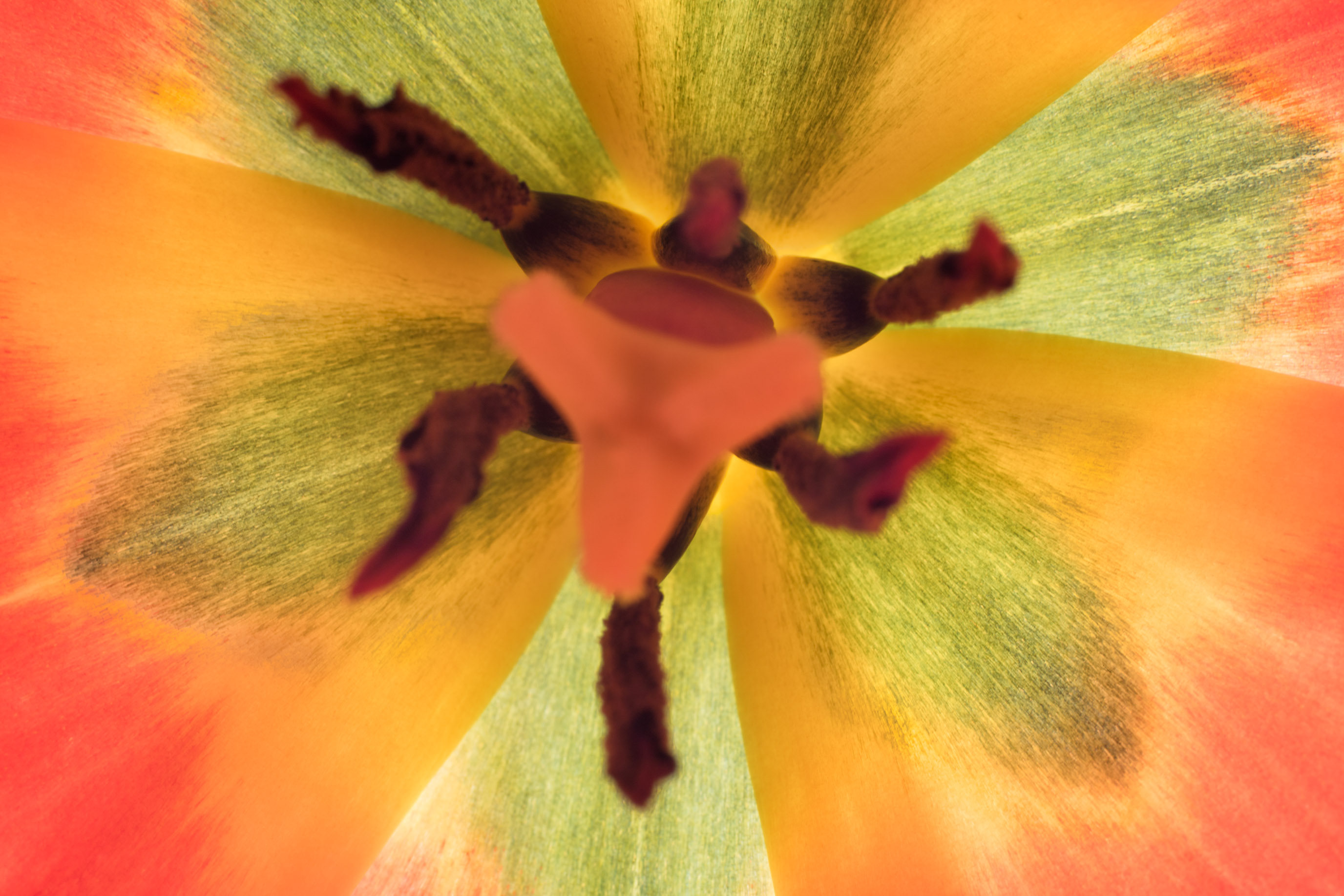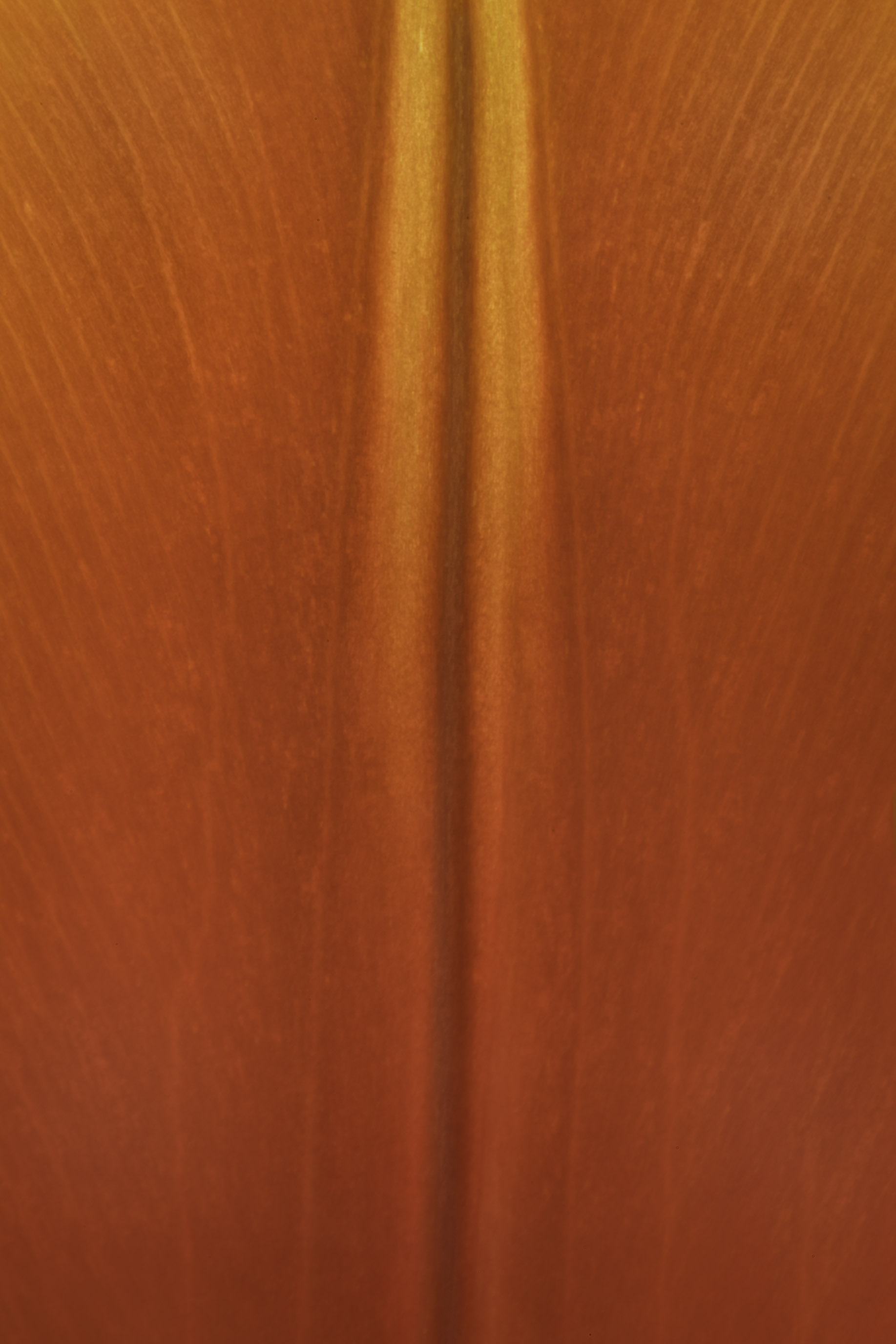Phyllis came home with a beautiful bouquet of tulips, and this morning I photographed them on the kitchen table. Warm morning sunlight lit the flowers from behind with a glow. I could control the light using the adjustable blinds on the kitchen windows, and also by moving the placement of the flowers so they were in and out of sunbeams.

This is the tale of some pretty flowers, nice natural ambient light, and three different 85mm lenses. To start with, I had my heavy-duty RRS tripod on the floor so I could bring the ballhead to the right height to get into the tulip blossoms from beneath. I mounted a 50mm extension tube with a tripod collar onto the ballhead.
My first image, Inside the Tulip C (above), was made using my Zeiss Otus 85mm at f/16, focused as close as it could go on the extension tube.

To make the next version, Inside the Tulip B (above), I swapped my 85mm Zeiss Otus for the 85mm Lensbaby Velvet and photographed wide-open (at f/1.8). Essentially, I was trading optical perfection for perfection in impressionismo! The Lensbaby Velvet makes a very different image stopped down (to f/16) in Inside the Tulip A (below)—note that the point of focus was the same for both the ‘A’ and ‘B’ versions. It’s worth mentioning that this lens has macro capabilities, so (combined with the extension tube) I was definitely working at a greater magnification ratio than in the ‘C’ version.

Since I’d already had fun with two different 85mm lenses, I decided to try a third, my Nikkor 85mm tilt-shift macro. As I’ve noted before, this is a fully manual lens, without even automatic diaphragm control—you need to press a button to manually stop the lens down when you are ready to expose.
Combined with the extension tube with the macro capabilities of this lens you can really get pretty much into microscope territory. But is too much ever enough? I added a +4 close-up filter to the front of the lens, focused on the small central indent in the tulip petals, and stopped down to f/45 (as an “adjusted aperture” this records in EXIF data as f/64 by the way).

Since this is a monochromatic image (in orange) and more about the patterns it presents than the coloration, I decided to try a black and white conversion, shown below.

All-in-all, a fun morning was spent photographing tulips up close and personal. There were some other things on my lists to accomplish, but I have learned (when I can) to relax, let go, and let art!